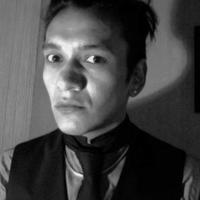| Husserl's Conception of Logic
Dpt of Philosophy |
 |
|
|||||
|
Although the logico-mathematical background of phenomenology belongs now- adays to common knowledge about history of early analytic philosophy, the scope of Husserl’s solutions to epistemic and epistemological questions raised by the use of symbols in formal systems remains largely to be exploited. At this point, his concept of pure logic developed at the turn of the ??th century is of the greatest significance. Its structuring will be the subject of the tutorial. The structuring of pure logic is conceived by Husserl as to handle the require- ment of an epistemic and epistemological justification of the formal logic that grounds (via axiomatization) the contents of knowledge (objective, ideal, symbolically given) of mathematics. In the Prolegomena (1900), it is stratified on three levels: on one hand, the inferior level of categorical morphologies, on the other hand, the superior level of formal logic subdivided into the theore- tical level of objectively valid theories (grounded in the categories and laws of categorical connections of the inferior level) and the meta-theoretical level of ultimate logico-categorical generality (conceived as the science of all theories of the theoretical level); and those three levels are then split transversally into two planes, the one of syntax (or ‘apophantics’), the other of semantics (or ‘on- tology’). The purpose of this tutorial is to provide a formal systematic recon- struction of that structuring of pure logic by putting it into the perspective of the semiotics of the Logical Investigations (1901) —combining thereby Husserl’s philosophical work on mathematical logic with the phenomenological theme of intentionality. After a historical introduction contextualizing the evolution of Husserl’s philo sophico-mathematical investigations, the tutorial will run on three sessions: S1. The Level of Formal Logic. Systems of axioms and formal manifolds; The problem of imaginary in mathematics and the question of the expan- sion of axioms systems; The notions of ‘definiteness’ and ‘completeness’. S3. The Structuring of Pure Logic. Stratification and components of pure logic; The internal linkages of pure logic; From a semiotic point of view.
|
|||||||
|
Edmond Husserl's Corpus:
|
|||||||